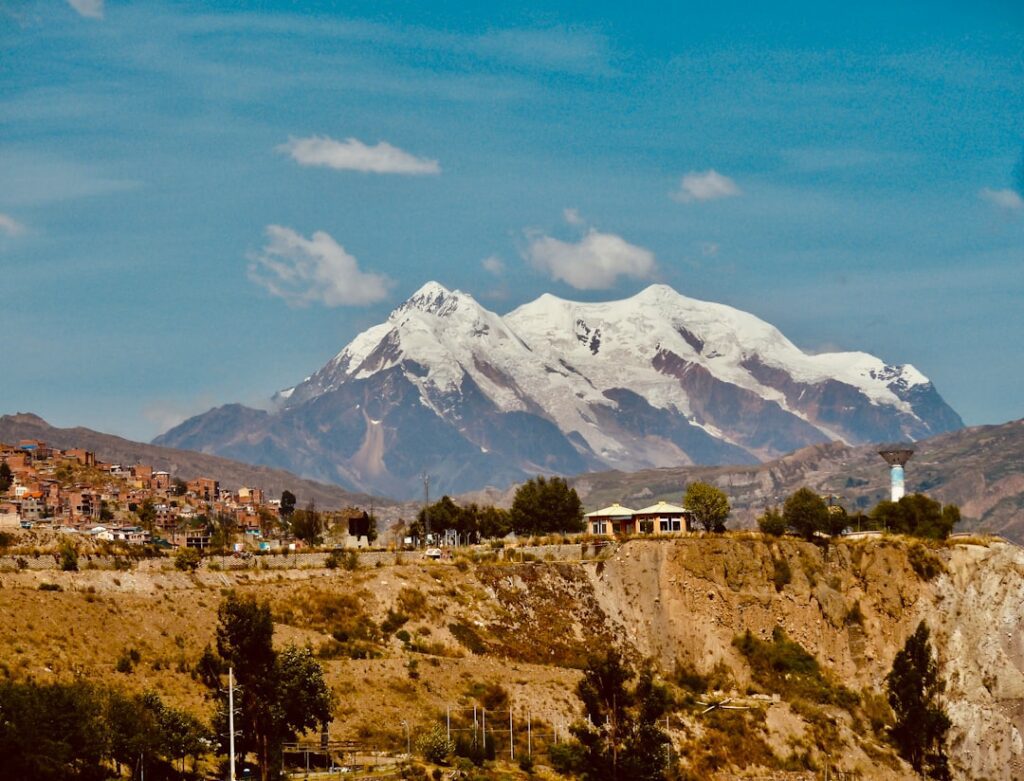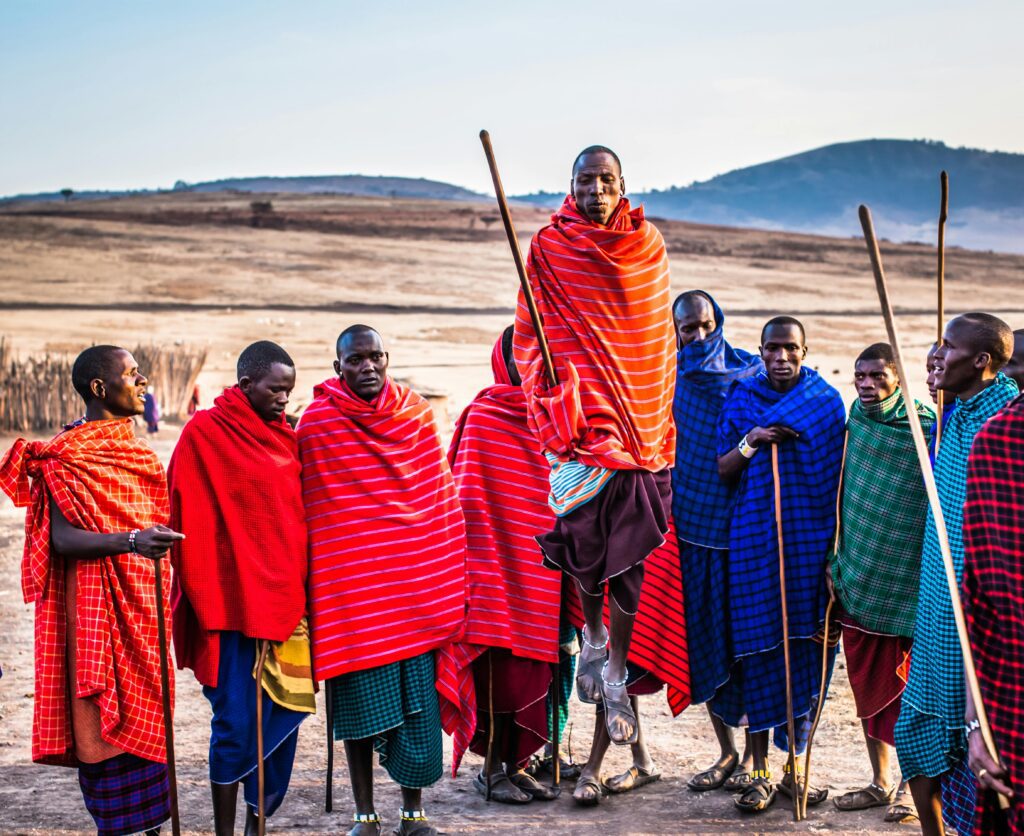The Ultimate Villa Tunari, Bolivia Guide: Jungles, Waterfalls & Wildlife Encounters
Villa Tunari, Bolivia isn’t just a destination—it’s a living Amazonian gateway. The humid air carries scents of tropical blooms and earth, while howler monkeys echo through emerald canopies and the Chapare River rushes over smooth stones. This is Bolivia’s wild heart made accessible.
Why Villa Tunari, Bolivia Stands Out
White building surrounded by trees, Villa Tunari, Bolivia
- Historic Architecture: The Cochabamba-Santa Cruz Highway Bridge (1960s) represents Bolivia’s ambitious push to connect its diverse regions through challenging terrain.
- Cultural Scene: The annual Festival del Tropico in August celebrates local indigenous cultures with traditional dances, music, and colorful parades.
- Local Specialties: Majadito, a savory rice dish with dried meat, fried plantains, and eggs that reflects the region’s tropical bounty.
Pro Tip: Visit between May and October (dry season) when trails are passable and wildlife viewing is optimal; arrive at Parque Machía by 7:30 AM to beat both crowds and the intense midday heat.
Map of Villa Tunari, Bolivia
Use these interactive maps to explore Villa Tunari, Bolivia and plan your route:
📍 View Villa Tunari, Bolivia on OpenStreetMap
🗺️ Open Villa Tunari, Bolivia in Google Maps
Planning Your Trip: Practical Essentials
Getting There and Around
- By Air: Fly to Jorge Wilstermann Airport (CBB) in Cochabamba (1 hour flight from La Paz), then take a 3-hour shared taxi (Bs 40-50 per person) or private transfer (Bs 300-400). Book flights at Skyscanner for best deals.
- By Train: No direct rail service; buses and shared taxis are the primary transport from major cities. Reserve tickets at Trainline or the national railway website.
- By Car: The scenic 3-hour drive from Cochabamba follows Highway 4 through stunning cloud forest; parking available at most hotels. Compare car rentals at RentalCars.com.
- Local Transport: Motorcycle taxis (Bs 5-10 per ride) are the main transport; walking covers most central attractions. Check official city transport websites for passes and schedules.
Best Time to Visit
The dry season (May-October) offers ideal conditions for hiking and wildlife spotting, while the wet season brings lush vegetation but challenging trails.
| Season | Weather | Highlights |
|---|---|---|
| Dry Season (May–Oct) | 20-30°C, low humidity, minimal rain | Best wildlife viewing, accessible trails, comfortable hiking conditions with moderate crowds |
| Wet Season (Nov–Apr) | 25-35°C, high humidity, daily rainfall | Lush vegetation, powerful waterfalls, fewer tourists but some trails may be impassable |
| Shoulder (Apr/Oct–Nov) | 22-32°C, occasional showers | Good balance of accessibility and lower prices, transitioning vegetation with fewer visitors |
Budgeting for Villa Tunari, Bolivia
Brown concrete building near green trees and mountain during daytime, Villa Tunari, Bolivia
| Category | Budget | Mid-range | Luxury |
|---|---|---|---|
| Accommodation | Bs 80-150 per night (hostels) | Bs 200-400 (comfortable hotels) | Bs 500+ (eco-lodges) |
| Meals | Bs 15-25 (market/local comedores) | Bs 30-60 (restaurants) | Bs 80+ (resort dining) |
| Transport | Bs 5-10 (motorcycle taxis) | Bs 20-50 (private taxis) | Bs 100+ (private drivers) |
| Activities | Bs 10-30 (park entries) | Bs 50-100 (guided tours) | Bs 150+ (private guides) |
| Daily Total | Bs 110-215 | Bs 300-610 | Bs 830+ |
Top Attractions and Must-See Sights
| Attraction | Description | Hours | Entry Fee |
|---|---|---|---|
| Parque Machía | Wildlife refuge with spider monkeys, coatis, and exotic birds in natural jungle habitat | 8:00 AM-5:00 PM daily | Bs 15 (foreigners) |
| Cascadas Las Palmas | Series of stunning waterfalls with natural swimming pools perfect for cooling off | 7:00 AM-6:00 PM daily | Bs 10 |
| Inti Wara Yassi Animal Sanctuary | Rescue center where volunteers care for Amazonian wildlife including jaguars and monkeys | 9:00 AM-4:00 PM (tour at 1:30 PM) | Bs 20 (tour included) |
| Río Chapare | Beautiful river offering swimming, fishing, and riverside relaxation spots | Always accessible | Free |
3-Day Itinerary: Villa Tunari, Bolivia’s Highlights & Hidden Gems
Day 1: Wildlife & Waterfalls
- Morning: 7:30 AM entry at Parque Machía (Bs 15) to observe monkeys during their most active hours. The spider monkeys often approach visitors in the early morning.
- Afternoon: 12:30 PM waterfall hike to Cascadas Las Palmas and lunch at Comedor Mary (Bs 25) for fresh river fish with yuca and rice.
- Evening: 6:00 PM sunset viewing at Mirador El Chorro followed by dinner at Restaurant La Cabaña (Bs 45-60) for their specialty parrillada.
Day 2: Conservation & Culture
- Morning: 8:00 AM Inti Wara Yassi sanctuary tour (Bs 20) – learn about their pioneering wildlife rehabilitation program started in 1996.
- Afternoon: 1:00 PM visit to local coca plantation (free, guide recommended) and lunch at El Pahuichi (Bs 35) for authentic majadito.
- Evening: 7:00 PM traditional music at Peña Tropical with local musicians and dancers (Bs 30 cover includes one drink).
Day 3: River Adventure & Relaxation
- Morning: Motorcycle taxi (Bs 15) to Río San Mateo for swimming and riverside hiking – look for the natural waterslides formed by smooth rock formations.
- Afternoon: 1:00 PM butterfly watching at Mariposario and lunch at Hotel Los Tucanes (Bs 50) enjoying their jungle-view terrace.
- Evening: Final jungle walk at dusk to hear howler monkeys and spot nocturnal wildlife emerging.
Cultural Insights & Etiquette
- Language: Spanish predominates; learn “Buenos días” (good morning), “Cuánto cuesta?” (how much?), and “Gracias” (thank you)
- Customs: Always greet people before transactions; asking about family is considered polite conversation
- Tipping: Not expected but appreciated; 5-10% in restaurants, small change for taxi drivers
- Dress Code: Lightweight, breathable clothing; modest attire preferred in town, swimwear appropriate at waterfalls
- Business Hours: Shops 8:00 AM-7:00 PM with midday break; restaurants until 9:00 PM; most closed Sunday afternoons
Where to Eat: Villa Tunari, Bolivia’s Best Bites
Villa Tunari’s cuisine reflects its tropical location with river fish, tropical fruits, and Amazonian ingredients defining the local flavor profile.
Must-Try Local Specialties
- Majadito: Savory rice with charque (dried meat), fried plantains, and egg; best at Comedor La Familia
- Pacú: Delicious river fish grilled with local herbs; try at Restaurant Río Mar
- Mocochinchi: Refreshing peach drink with cinnamon; available at most market stalls
Restaurant Recommendations by Budget
| Type | Restaurant | Specialty | Price Range |
|---|---|---|---|
| Budget | Comedor Mary (Central Market) | Daily lunch menus with river fish | Bs 15-25 |
| Mid-range | Restaurant La Cabaña (Main Street) | Parrilladas and local meats | Bs 40-70 |
| Fine dining | Hotel Los Tucanes (Riverside) | Gourmet Amazonian fusion cuisine | Bs 80-120 |
Where to Stay
Accommodation ranges from basic hostels to comfortable eco-lodges, with most options clustered near the main road or riverside. Compare prices and book at Booking.com or Airbnb for apartments.
Best Neighborhoods for Accommodation
- Central Villa Tunari: Walking distance to restaurants and parks, can be noisy, ideal for budget travelers and short stays
- Riverside Area: Peaceful with beautiful views, slightly removed from center, perfect for nature lovers and relaxation
- Highway Access: Easy transportation access, less scenic, convenient for those with early departures
A blue house sitting on top of a lush green hillside, Villa Tunari, Bolivia
FAQs: Your Villa Tunari, Bolivia Questions Answered
1. Is Villa Tunari, Bolivia safe at night?
Generally safe, but take normal precautions: avoid isolated areas after dark, don’t display valuables, and use licensed motorcycle taxis. The main streets remain active until about 9:00 PM.
2. What currency is used and are credit cards accepted?
Bolivian Boliviano (Bs); carry cash as most establishments don’t accept credit cards. ATMs are available but sometimes unreliable – bring sufficient cash from Cochabamba.
3. How do I get from the airport to Villa Tunari?
From Cochabamba airport, take a taxi to the bus terminal (Bs 25), then a shared taxi to Villa Tunari (Bs 40-50, 3 hours). Book airport transfers at GetYourGuide for convenience.
4. Do I need to speak the local language?
Basic Spanish is very helpful as English is rarely spoken; learn essential phrases or use a translation app. Locals appreciate attempts to speak Spanish.
5. What’s the appropriate dress code?
Light, quick-dry clothing for humidity; sturdy shoes for trails; swimwear under clothes for waterfall visits; light jacket for occasional cooler evenings.
Final Thoughts: Villa Tunari, Bolivia Awaits
Villa Tunari offers an authentic Amazonian experience without the extreme remoteness of deeper jungle destinations. Its perfect balance of accessibility and wild nature makes it ideal for travelers seeking wildlife encounters, waterfall adventures, and cultural immersion in a single destination. The town’s genuine hospitality and stunning natural surroundings create memories that linger long after you’ve returned home. Come for the monkeys, stay for the magic.
Keywords
Villa Tunari, Bolivia travel guide, Villa Tunari, Bolivia attractions, things to do in Villa Tunari, Bolivia, Villa Tunari, Bolivia itinerary, Villa Tunari, Bolivia restaurants, Villa Tunari, Bolivia hotels, visit Villa Tunari, Bolivia, Villa Tunari, Bolivia tourism, Villa Tunari, Bolivia vacation, Villa Tunari, Bolivia trip planning






